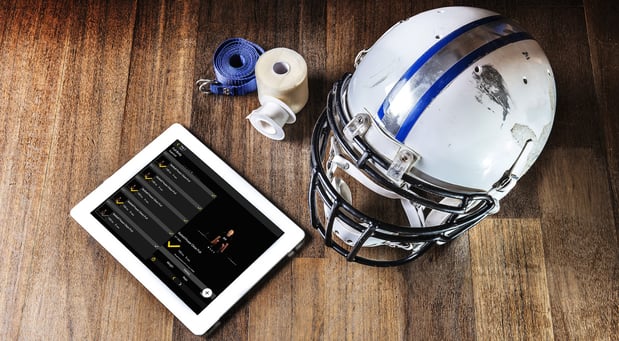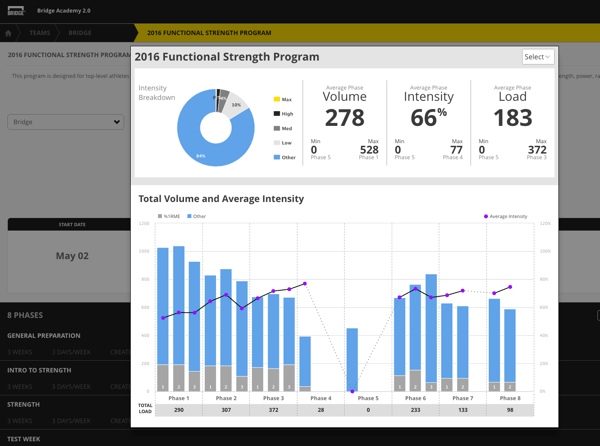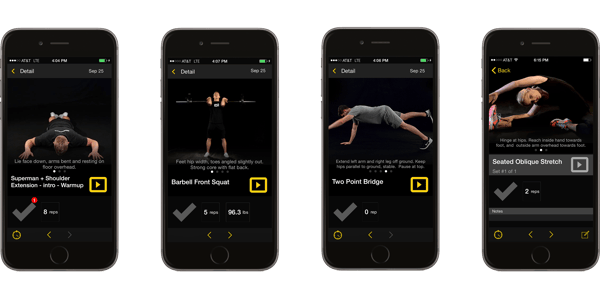Building a Better Football Program

Outside the practice field, the weight room is a second home for football players. Strength training plays a significant role in the development of a football team. A successful strength and conditioning program can be the defining factor for harnessing raw young talent into true athleticism. In a sport that demands a capacity for both agility and power, a dynamic training plan to accommodate athletes’ needs should be well documented to track athletic development within multiple growth areas.
Set a Baseline
The best coaches take note of where their athletes’ starting point is for the season. In order to continue to challenge their athletes without overloading, coaches must understand their baseline by recording both quantitative and qualitative aspects of their development program. While recording 1RME’s for key exercises is necessary, setting a baseline for other key metrics such as nutrition, sleep, bodyweight, and more is best practice as well. Once you’ve got your baselines set, then tracking athletic development is key to building a sustained competitive advantage over the long term.
Increased Coaching Efficiency
Being a strength coach means spending time developing players into athletes, coaching form, technique and character, as well as pushing individuals to their limits so they improve. However, it also entails hours spent building and analyzing training, ensuring that your athletes are developing to their potential but not overworked to cause injury. How you track that progress can be the difference between spending hours on the computer formatting spreadsheets and spending that time with your athletes. The BridgeAthletic platform allows coaches to build a full training program and assign it in minutes. Advanced algorithms do the heavy lifting behind the scenes, eliminating the need for updating formulae and manually inputting results after each workout. Once you’ve uploaded your athletes into the platform and broken them down into positional groups just like in practice, tracking athletic development becomes 3 simple steps:
1) Build a program for one positional group in minutes. Customize it for each individual and clone it to other positions so you’ve always got a base to start with. No formatting, just building made simple. Click here to sign up for a demo of the builder.

2) Athletes access their workouts in the weightroom with the multi-athlete tablet view or remotely on their own mobile device. Each exercise has videos & cues so the athletes always know exactly what you’ve assigned and can update their results as they complete each exercise.
 3) As soon as the athletes complete their workouts, all the data is immediately saved to their profile, allowing you to see their progress and compare players within the team. With tracked test results, chart the gains your athletes have made and update the entire team’s performance data with a quick click.
3) As soon as the athletes complete their workouts, all the data is immediately saved to their profile, allowing you to see their progress and compare players within the team. With tracked test results, chart the gains your athletes have made and update the entire team’s performance data with a quick click.
Recap
A successful strength program can be the defining factor for having a winning season. A coach's job is to provide the best training for their players that is position-specific and maximizes athletic potential. When performance and progress is tracked, player progress and progressions can be altered to keep pushing limits while reducing the risk of injury. Spend less time in spreadsheets, and be on the floor with your athletes. Smarter training, better results, BridgeAthletic.
About the Author

At Bridge, we are all athletes and coaches first. As athletes, our team has experienced everything from riding the pine on JV, to winning NCAA championships, to competing in the Olympic Games. As coaches, we have helped countless athletes reach their full potential, winning everything from age group section championships to Olympic Gold Medals.
Related Posts

The Best Bench Press Variation You’re...
This post is part of our Coaches Corner series with Taylor Rimmer. Taylor is NSCA-CPT, StrongFirst...

Does Powerlifting Harm Heart Health?
A recent study has discovered that a 12-week supervised strength training program (SSTP) may result...
-1.png)
Barefoot Running: Is It For You? |...
Run Free: Consider Less Cushion
Updated October 2020:
With more athletes looking for ways to...


